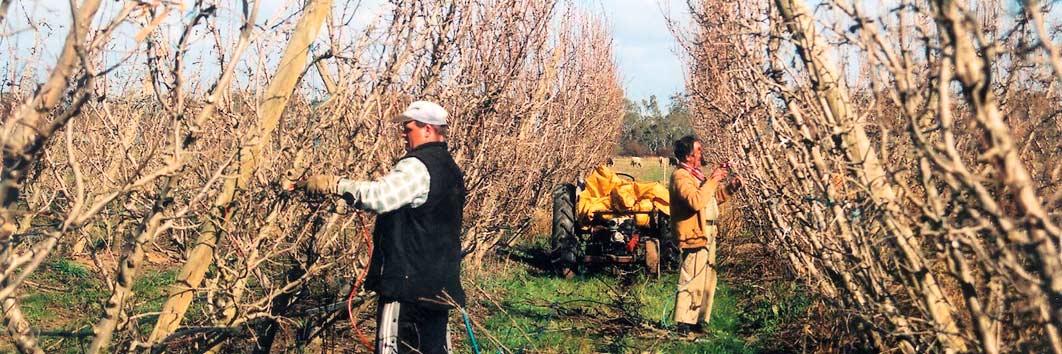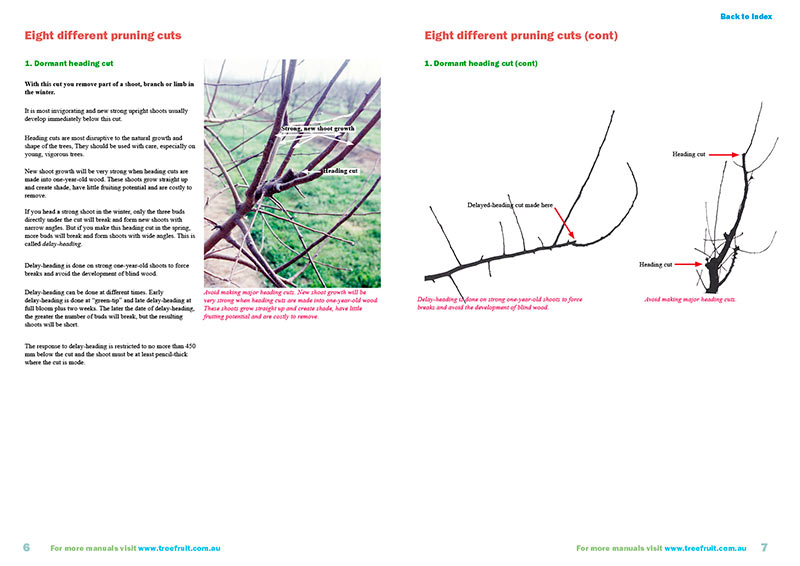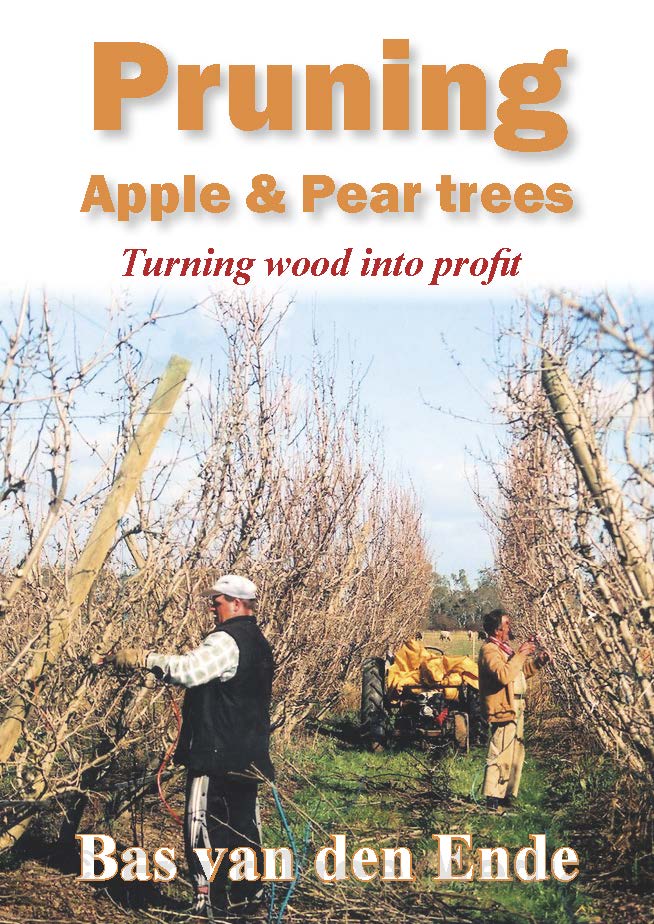
Training and pruning young trees allows us to regulate tree growth and fruitfulness so that we can maximize the production potential of an orchard.
Why train and prune young apple and pear trees?- A young tree that is not pruned will become a shapeless tree.
- A shapeless tree does not fill its space in the orchard and we cannot maximize light interception and light distribution.
- Growing fruit means trapping (intercepting) as much sunlight as possible and converting it into a high quality product that we can sell.
- To shape a fruit tree and give it a good structure we must train and prune young trees.
- The best shapes to intercept and distribute sunlight are the Christmas tree‑type (Central Leader) and V‑type (Tatura Trellis).
- Any pruning during the early years is dwarfing, the trees cannot fill their space quickly and it delays fruiting.
- Trees that are trained well and pruned minimally, grow fast and come into production soon.
- Fruiting reduces tree growth. If we allow fruit trees to crop heavily too soon, the trees will be in full production before they have filled their allotted space.
45 pages of information, photos and illustrations
The best shapes to intercept and distribute sunlight are the Christmas tree‑type (Central Leader) and V‑type (Tatura Trellis).
Growing fruit means trapping (intercepting) as much sunlight as possible and converting it into a high quality product that we can sell.
What you will find in this manual
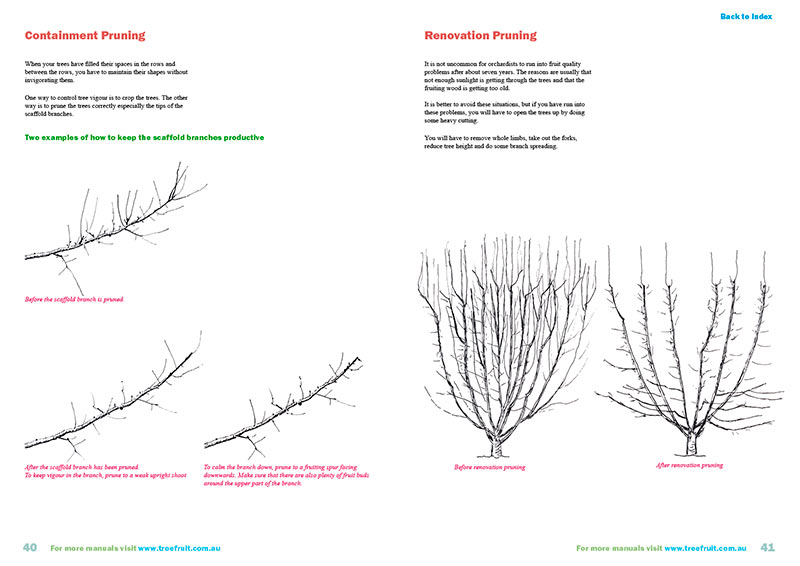
Pruning cuts
- Eight pruning cuts
Balanced tree structure
- the 3:1 rule
- Avoid forks
- Keep trees open
- Spreading branches
- Keep the tips of branches up
- Control growth in the heads
- Keep leaders straight
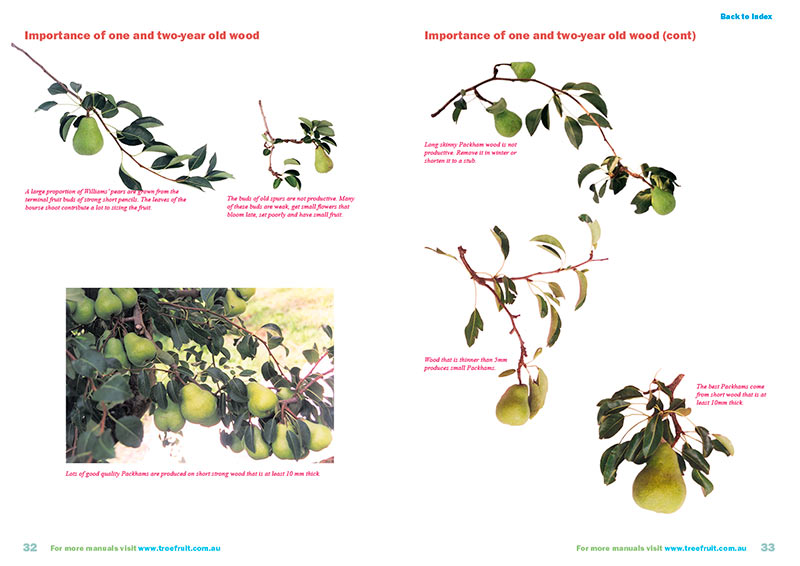
Types of wood & buds
- Different buds
- Importance of 1 and 2 year old wood
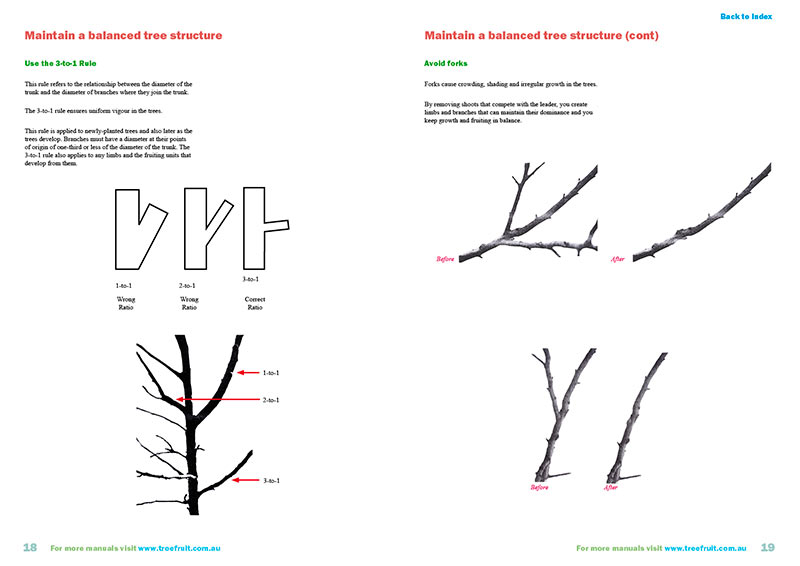
Pruning
- Renewal pruning - the 1,2,3 rule
- Spur pruning
- Containment pruning
- Renovation pruning
- Root pruning
$33.00
More Orchard Manuals
$33.00

